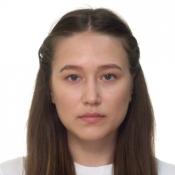Theoretical seminar | 03 February 2021
Online

Topological physics enables an assortment of tools to route and localize waves in artificially designed crystals. To date, all the ways to realize topological edge states reduce to several well-established approaches (breaking of time-reversal symmetry, exploitation of spin-Hall effect or its analogues, temporal modulation or specific point symmetry of a crystal), which have fundamental and practical restrictions. Here I present a new way of originating and controlling topological states of light and acoustic waves exploiting hybridized resonances of a single particle. Such a strategy opens a new degree of freedom to control band topology and paves the way to new generation of highly manageable topological systems and devices.

2D magnets can host non-collinear magnetic structures (vortices or skyrmions) which may be used to store and manipulate information. It is assumed that in D3h magnet noncollinear states, which were observed experimentally, arise due to the 4-spin interaction. We demonstrate phase transition from a collinear to a helical spin-wave state.

The multidimensional energy surface of a chiral magnetic material is investigated using the example of a cholesteric liquid crystal. The minimum energy paths between topologically different states on this surface are used to study the stability of states and the mechanism of transition between them.
Last news
-
-
Butterfly Effect: ITMO Researchers Create Colorful Perovskite Films for Optoelectronics
-
Scientific Show, Lectures, and Lab Tours: Recap of Physics Day 2025 at ITMO
-
ITMO-Developed Metasurface Makes Optical Chips 2x More Efficient
-
“Combing” Light: ITMO Researchers Find Reliable and Fast Way to Transmit Data in Space
